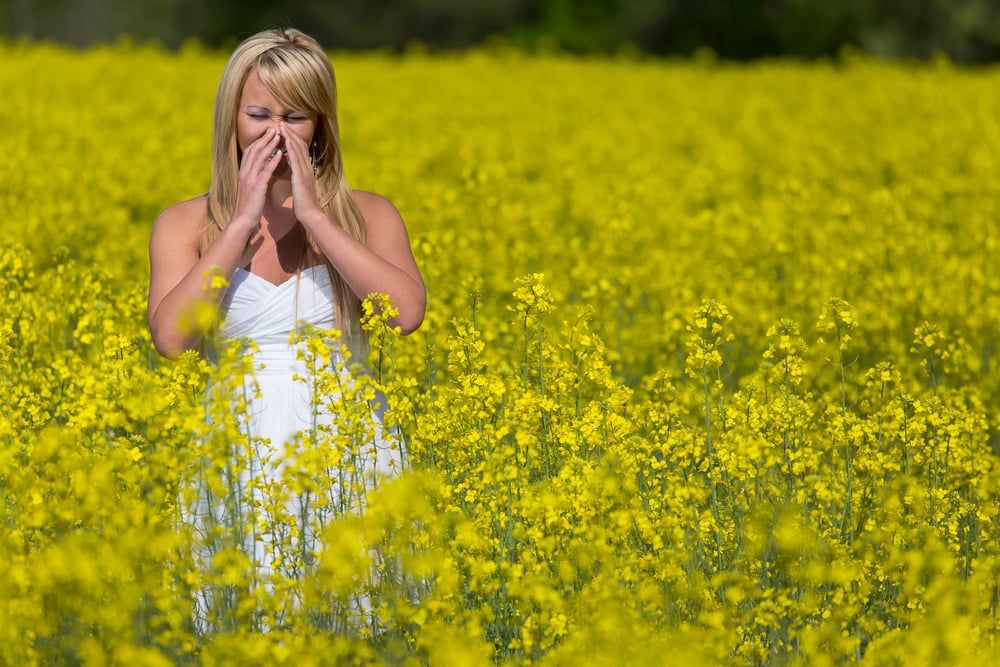For millions of people in California, the arrival of spring means an increase in allergies. Normally, springtime allergies are manageable with lifestyle adjustments and the use of remedies like sinus rinses or medical therapeutics. But, this year, some people may find it more challenging than usual to keep their symptoms from flaring unexpectedly. Thanks to global warming and climate change, abnormally high pollen counts are in the forecast for the near future. In order to prepare for the warmer season ahead, check out the following information on the most common spring allergies in California.
What Causes Spring Allergies?
Allergies occur when the immune system overacts to the presence of allergens. This reaction isn’t caused by a virus or germs and doesn’t cause infection. It’s also not contagious. Instead, people with spring allergies tend to develop rhinitis, a condition that causes symptoms that mimic the common cold, mild flu, and sinus infections. Spring allergies can also aggravate other conditions, such as asthma and ear infections.
Rhinitis is not normally a long-term or serious condition. But due to the climate and unusually high pollen counts, it can linger on longer than usual and become troublesome for some individuals to manage without medical intervention. In most cases, rhinitis symptoms resolve within a few weeks to months, depending on the general health, length, and severity of allergen exposure and other factors. There are also circumstances in which rhinitis becomes chronic, meaning the symptoms often come and go without warning all throughout the year, not just during the spring.
Common Spring Allergies
Spring allergies symptoms can make life miserable for some. The persistent runny and congested nose, coughing, sneezing, accompanied by red, itchy, or watery eyes are not so easy to manage when there’s an abundance of pollen, mold, and other allergens in the spring air. Though pollen is a primary cause of spring allergies for many Californians, allergic reactions from food sensitivities and insect bites and stings are pretty common too. In most cases, springtime allergy symptoms resolve on their own and respond favorably to antihistamines, medication, and remedies. Limiting exposure to allergens is extremely helpful in preventing flares and shortening the duration of attacks. However, thanks to elevated pollen counts in the air, many allergy sufferers in California experience more frequent and severe symptoms and flare-ups with the arrival of warmer weather and longer days.
Below are some common allergy triggers:
Grass, Tree, and Weed Pollen:
Pollen comes from trees, weeds, grass, etc. As the seasons change over into spring, pollen grains are released into the air. Pollen is a vital step of the fertilization cycle for many types of plants, but a source of discomfort and distress for more than 10 million people with pollen sensitivities, according to the American College of Allergy, Asthma & Immunology.
Tree pollen is often the first to trigger spring allergies for individuals in California, though some species release their pollen earlier or sooner in season or throughout the year depending on the environment and other factors. Grass and weed pollen also tend to peak during this time of year before leveling off a bit.
Mold spores:
While less common, mold spores tend to trigger allergies during the spring as well. Mold and mildew thrive on humidity and produce spores to reproduce when the conditions are right. Rainy weather and elevated indoor air humidity are common during the spring. However, mold and mildew activity is lowest during the dry and windy lulls of the season. Mold spores travel in the air and can be found in many strange and unexpected places indoors too, such as in cooking and bathing areas and damp basements.
Bug bites and stings:
A lesser-known cause of spring allergies for many initially involves insects. Bites and stings often cause allergy symptoms that differ from those associated with rhinitis. Pain and tenderness near bitemarks and stings, redness, skin inflammation, and itching are symptoms of adverse immune response known as anaphylaxis. This reaction is also extremely common with food allergies and sensitives. However, when it comes to spring allergy season and insects, mosquitoes, spiders, bees, bedbugs, and roaches are the most usual triggers. Anaphylaxis can cause extreme reactions that include shock, hives, and swelling of the airways, throat, lips, or tongue and become life-threatening in rare cases.
Airborne and Environmental Irritants:
Allergy symptoms can occur due to exposure to environmental irritants. Smoke, dust, pet dander, chemicals, toxic or harmful substances or particles in the air, and even hormone and underlying health concerns like asthma can trigger nonallergic rhinitis. The symptoms are similar to allergic rhinitis and other common allergies but are more likely to occur at any time throughout the year, not just during the spring.
Managing Spring Allergies in California
Living with allergies is not for the weak, nor does it require drastic lifestyle changes and invasive medical procedures. Ideally, you should see an allergy or ENT specialist if you start developing allergy symptoms more frequently than usual. Also, there is some overlap between allergy symptoms and other medical conditions that can make it difficult to determine the appropriate course of action to manage them. For example, both COVID and sinus infections cause inflammation in the airways, headaches, nasal congestion, and throat soreness. But, unlike most spring allergies, they are transmittable and can infect others. They can also trigger and aggravate allergic reactions.
With or without an official allergy diagnosis, there’s no need to suffer from the symptoms. There are ways to minimize their impact on your health and well-being. Contact C/V ENT Surgical Group at 818-431-2769 today to learn therapies and treatment options to prevent those springtime or seasonal allergies from flaring up.


